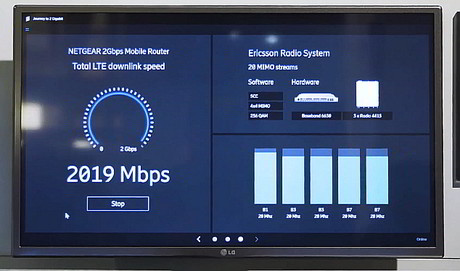"Plenty of life left in 4G": Telstra

There’s “still plenty of life left in 4G” according to Telstra’s Group Managing Director of Networks, Mike Wright, as the telco pushes forward with increasing network speeds.
Late last week, Telstra, along with Ericsson, NETGEAR and Qualcomm, began testing 2 Gbps over LTE with a prototype commercial device in the Ericsson lab environment in Stockholm.
“The results continue to be very positive, again demonstrating that by aggregating 100 MHz of spectrum across various combinations of frequency bands and utilising 4×4 multiple-input and multiple-output (MIMO) technology, speeds of 2 Gbps can be achieved over 4G,” said Wright in a blog post.
“With the early success of the latest testing, we can now begin to plan to deploy the 2 Gbps-enabled 4G technology in our network, targeting high-traffic areas like CBDs, stadiums and shopping centres,” he added.
“This will support even greater capacity and faster mobile speeds for our customers as the demand for data continues to grow.”
Wright said that Telstra expects to deploy 2 Gbps-enabled LTE technology in select locations later in 2018, adding that “with the NETGEAR Nighthawk Mobile Router expected to be available in late 2018, we are gearing up to launch the world’s fastest 4G device on Australia’s fastest mobile network”.
He added, “Enhancing the performance of 4G is also an important step forward in the development of 5G.
“For most initial uses, 5G will not be a standalone technology. This means the quality of the underlying 4G service and how it integrates with 5G will go a long way to determining the overall mobile experience,” he said.
“As this testing shows, there is still plenty of life left in 4G as we continue to invest in faster speeds and greater capacity on 4G as part of delivering the best mobile experience for our customers.”
Please follow us and share on Twitter and Facebook. You can also subscribe for FREE to our weekly newsletter and quarterly magazine.
Originally published here.
5G mmWave extended to 14 km in nbn field trials
Live field trials of 5G mmWave technology in parts of the nbn Fixed Wireless network achieved...
Mavenir and Terrestar achieve NTN Voice over NB-IoT call
The achievement was conducted over a 3GPP-standardised NTN S-band spectrum, avoiding interference...
Canada to purchase $6.6bn Australian radar system
Canada intends to purchase an Australian-developed, over-the-horizon long-range radar system, in...





